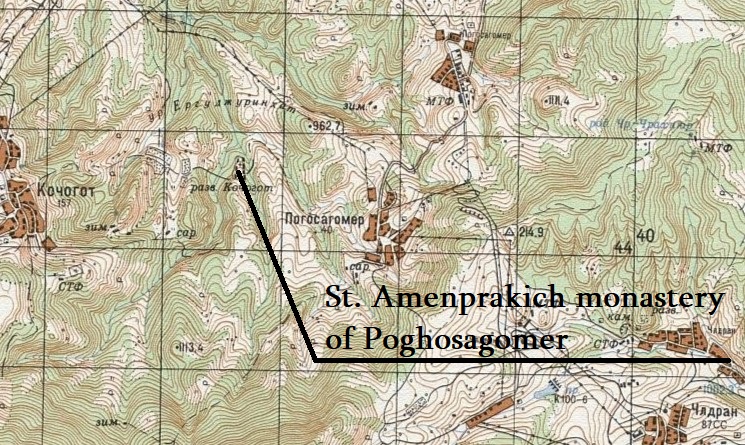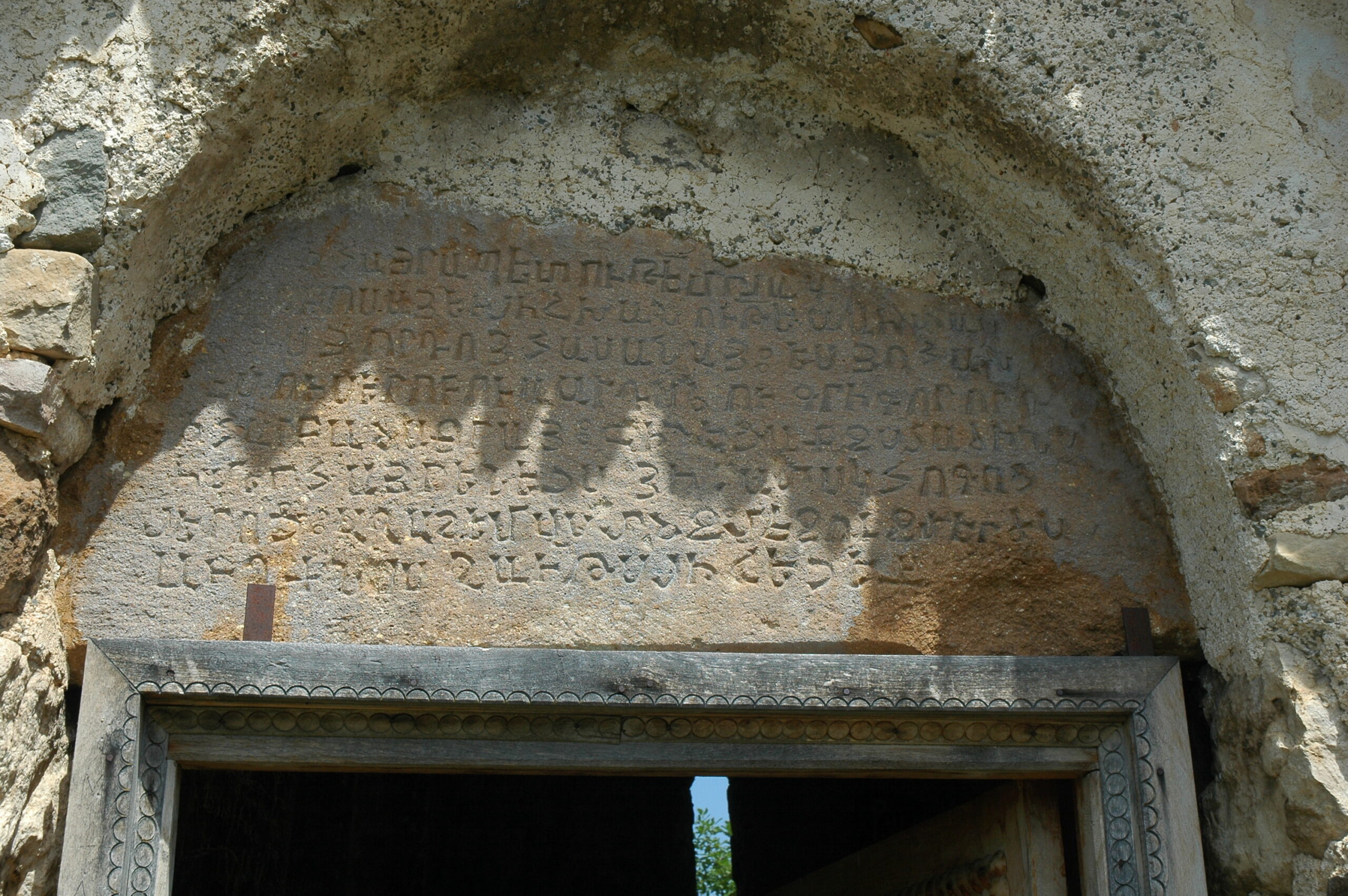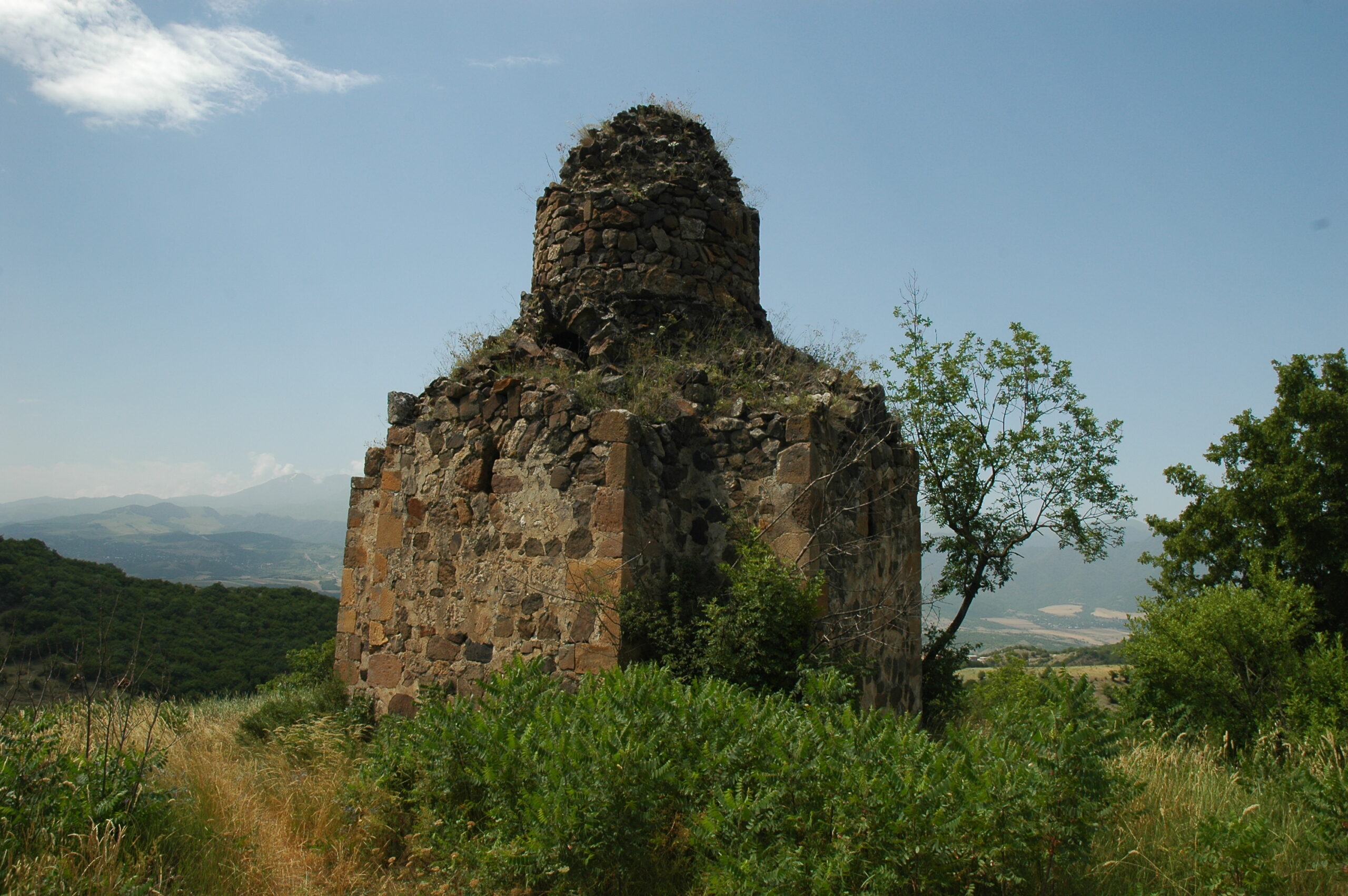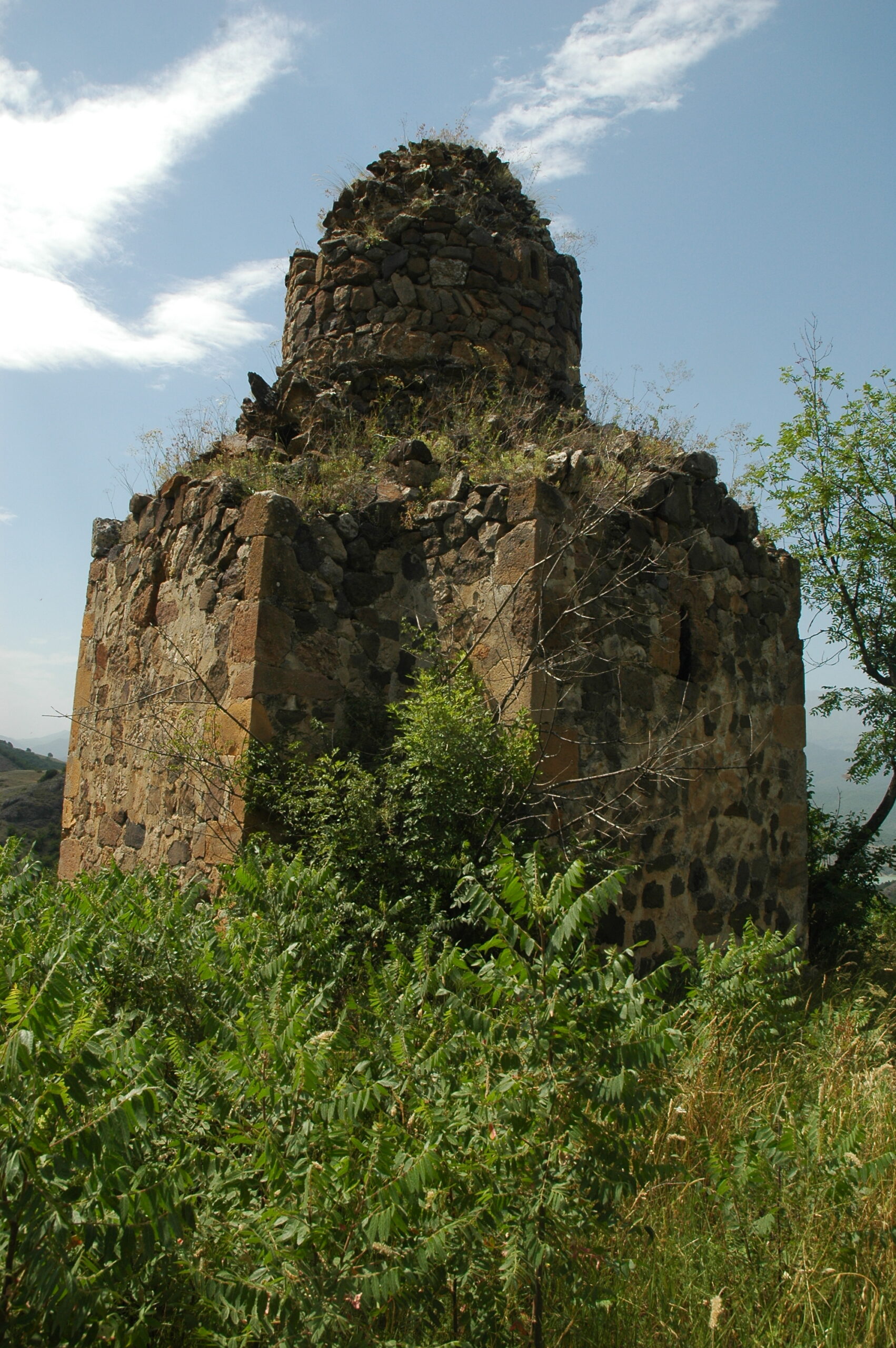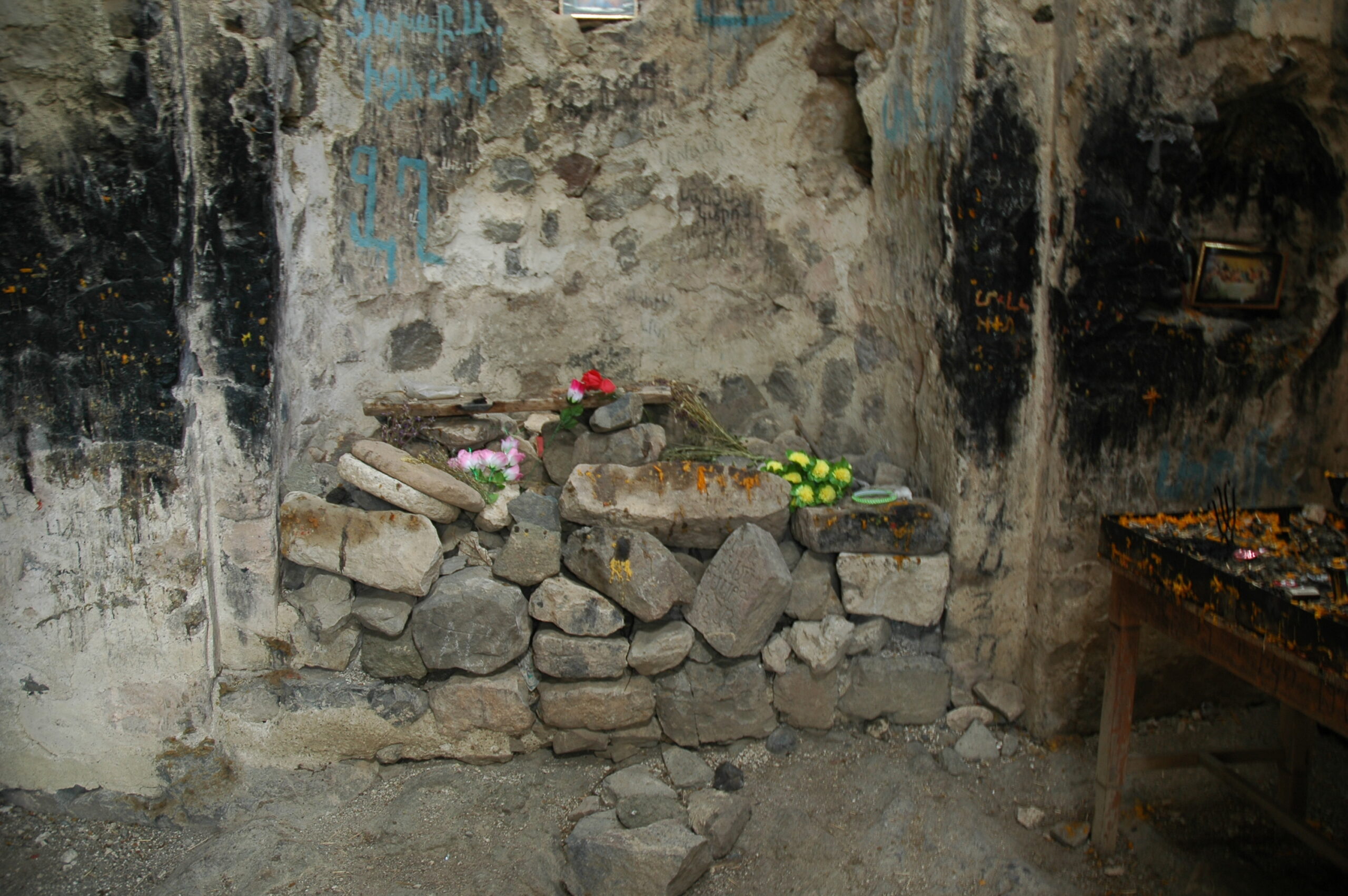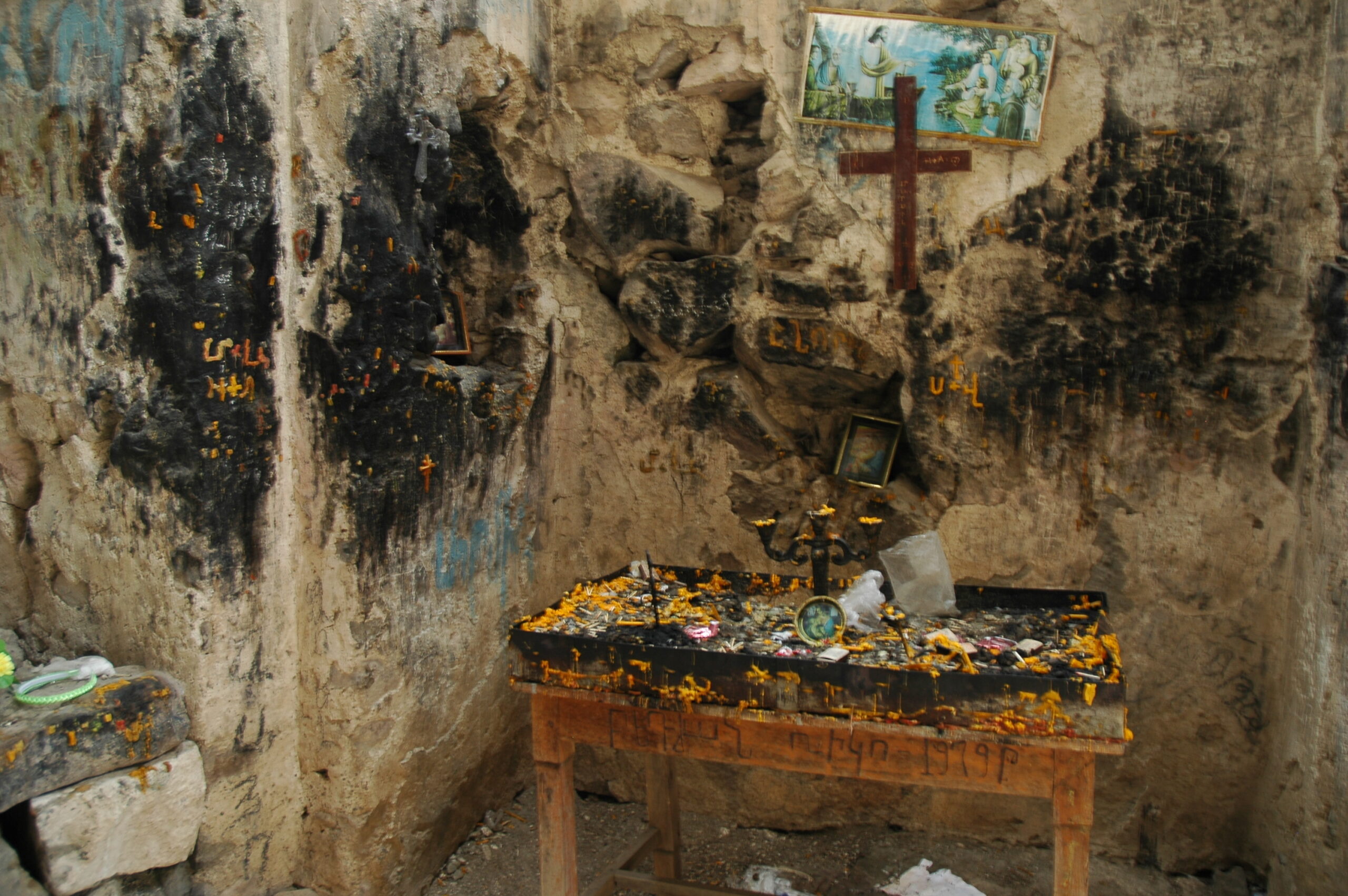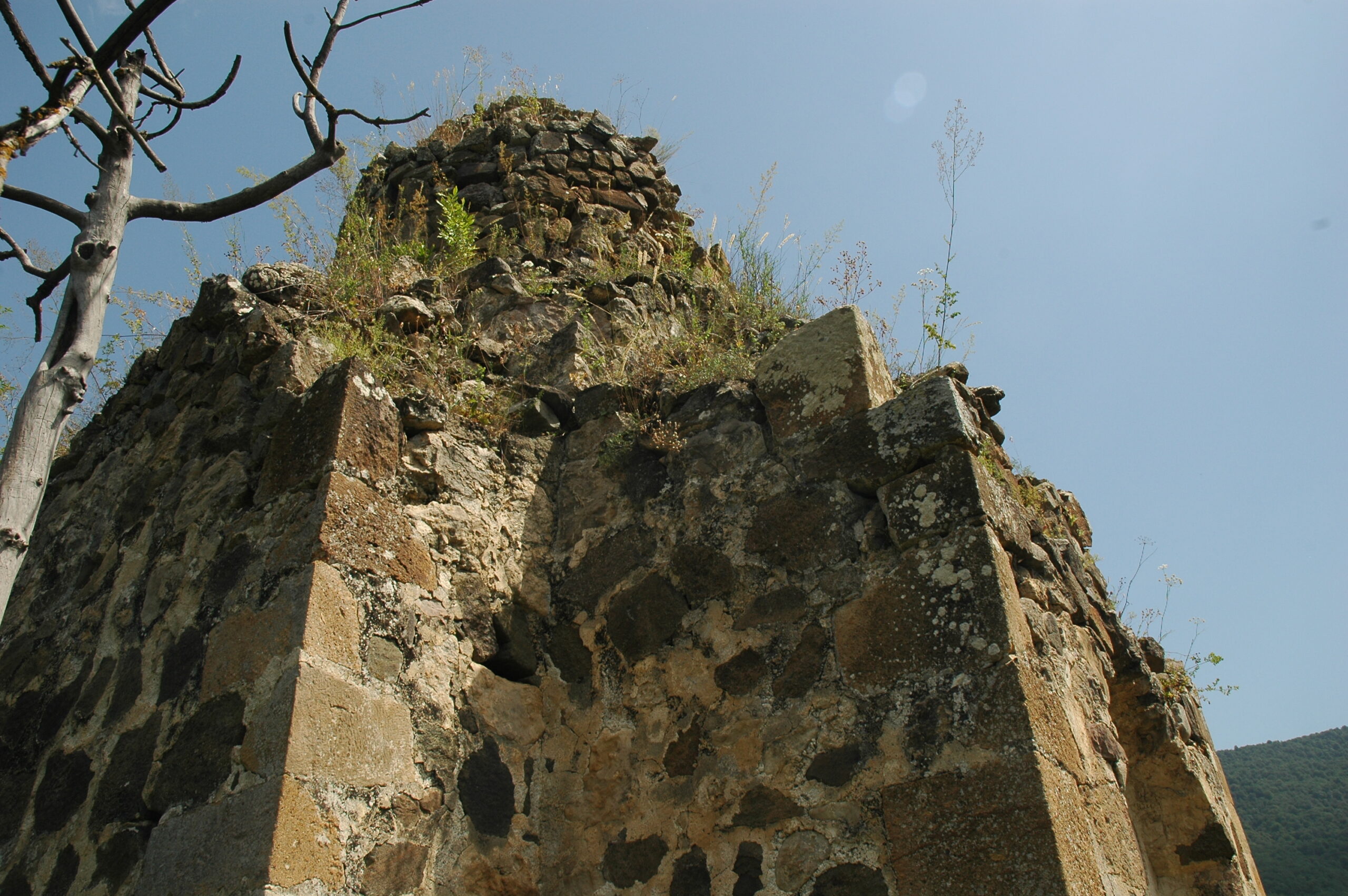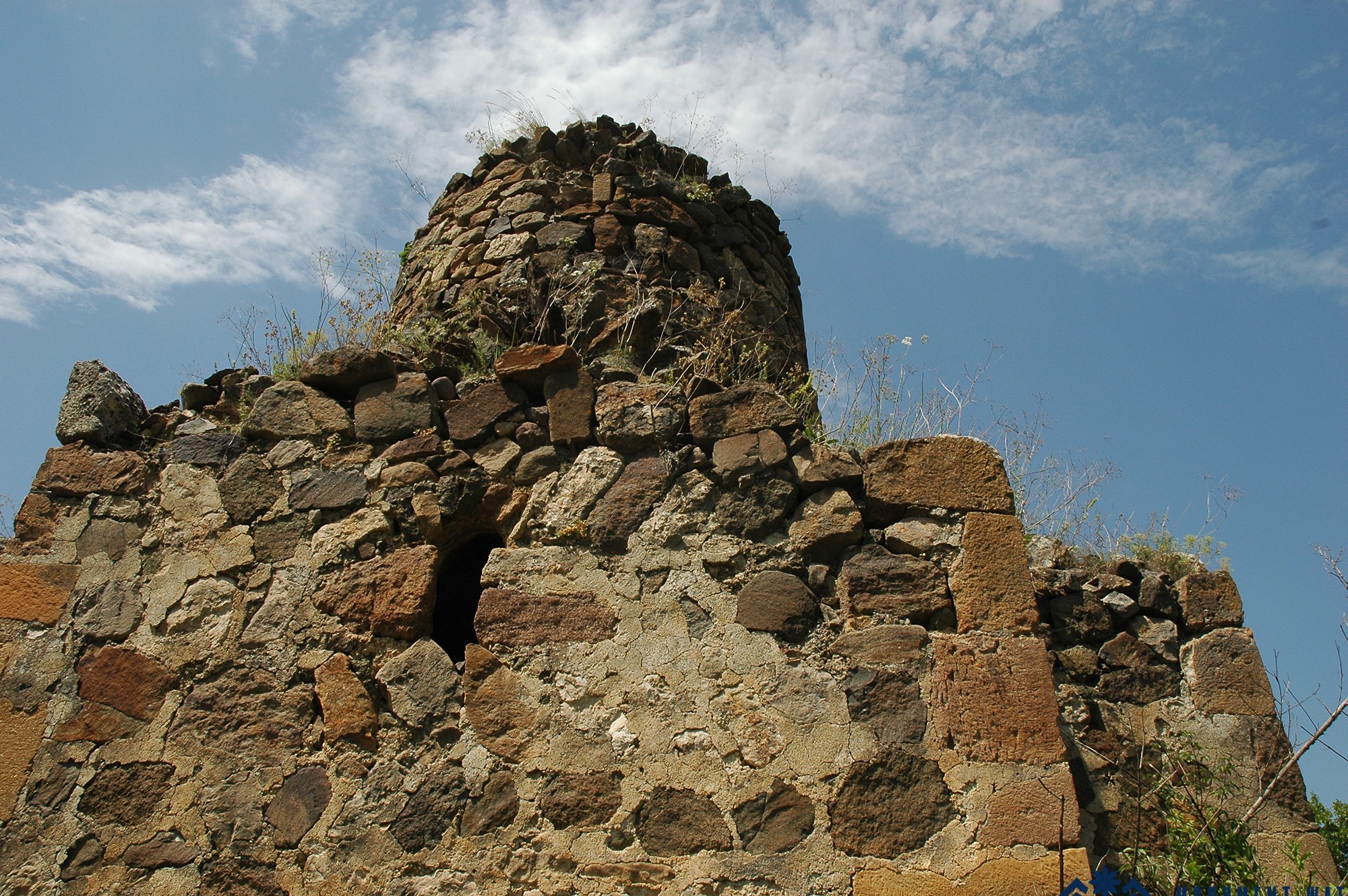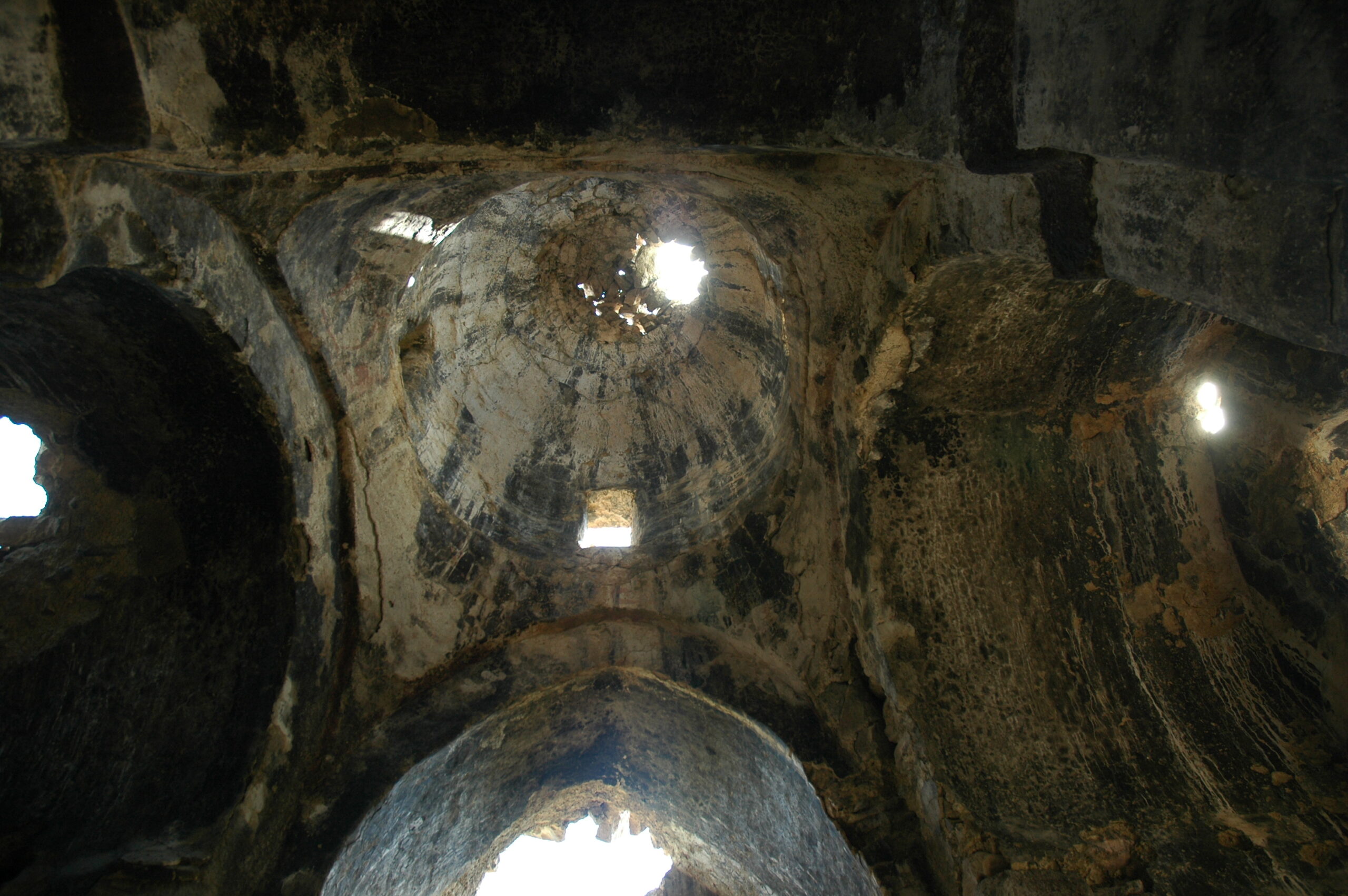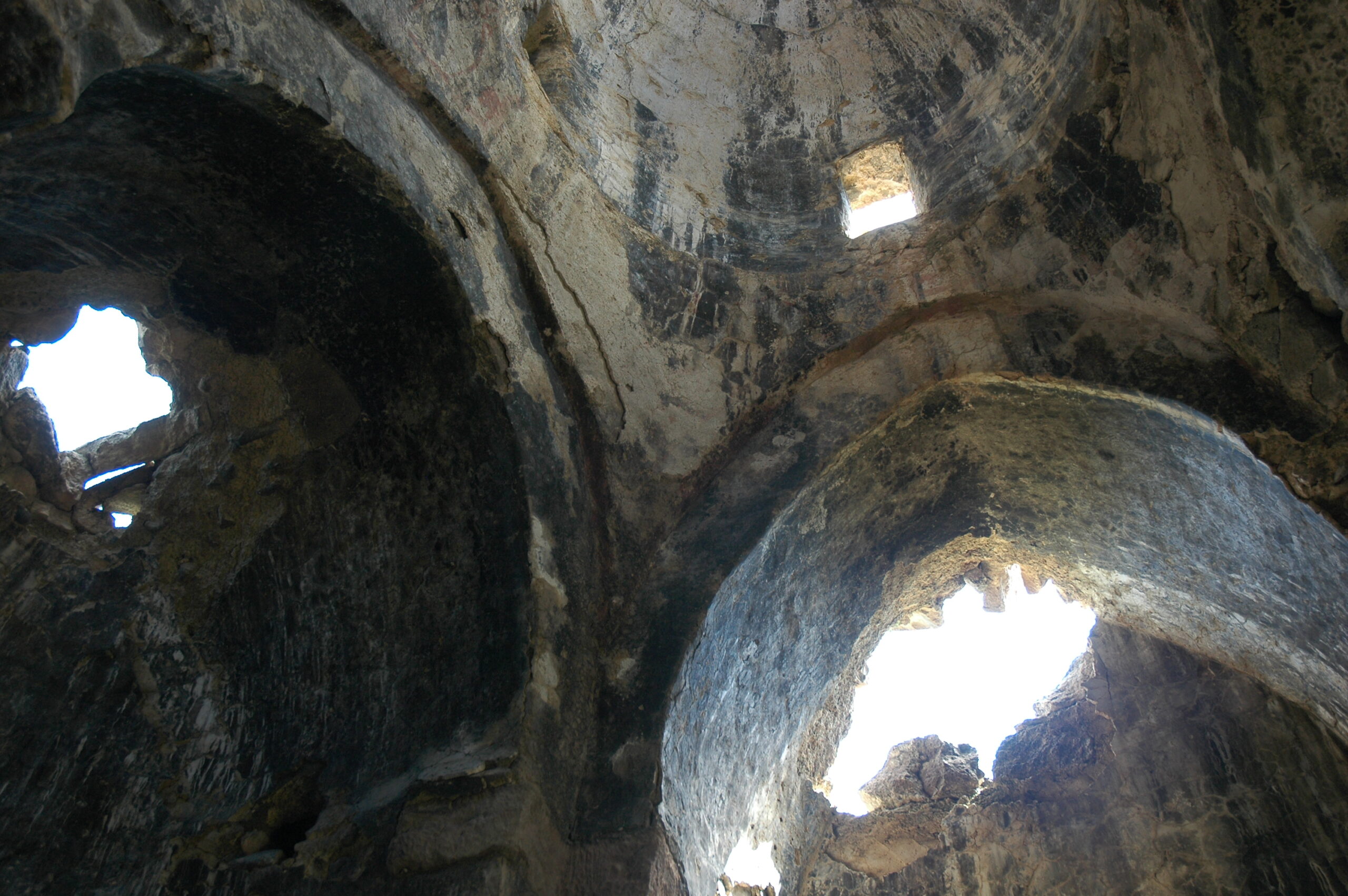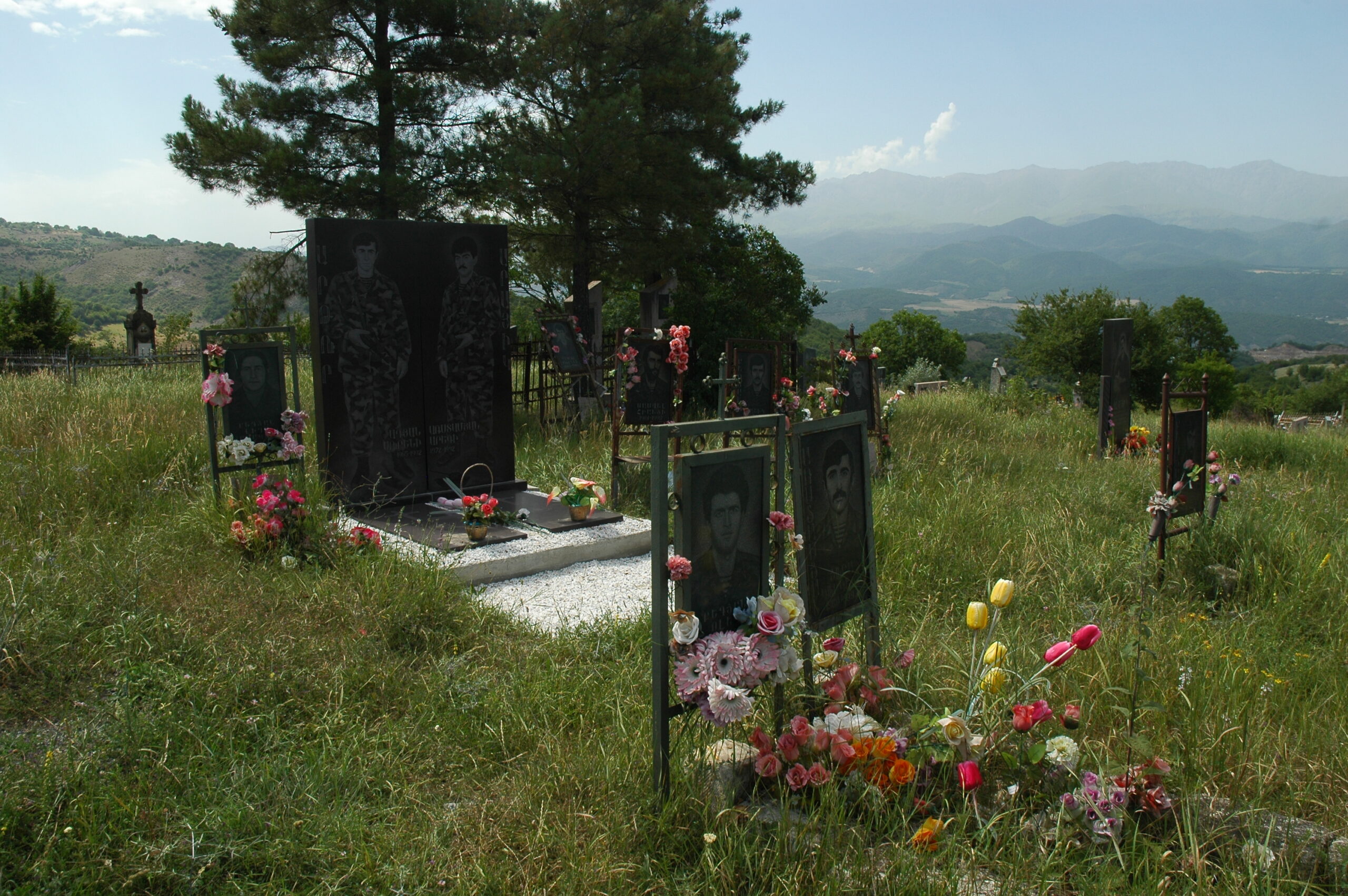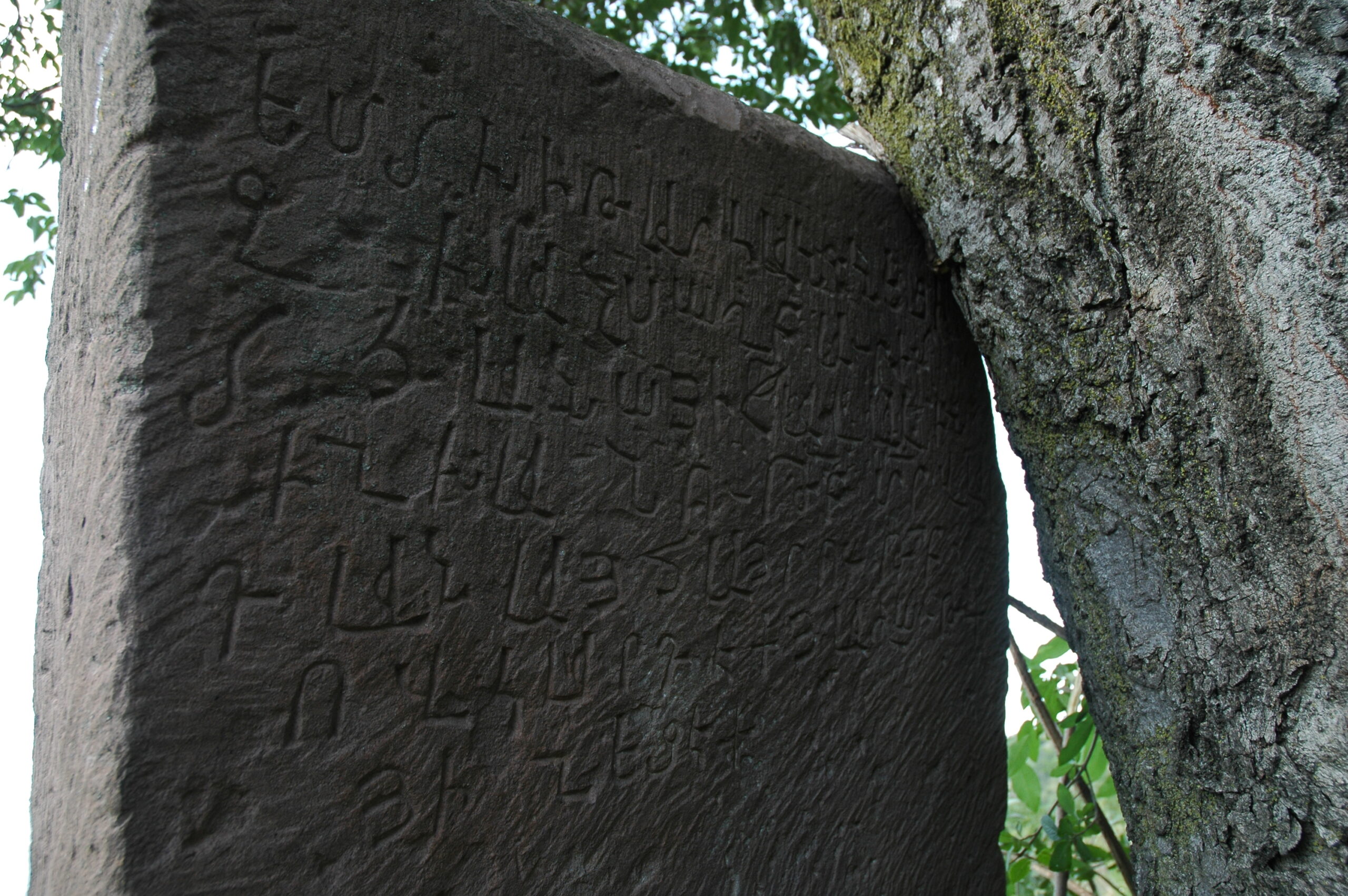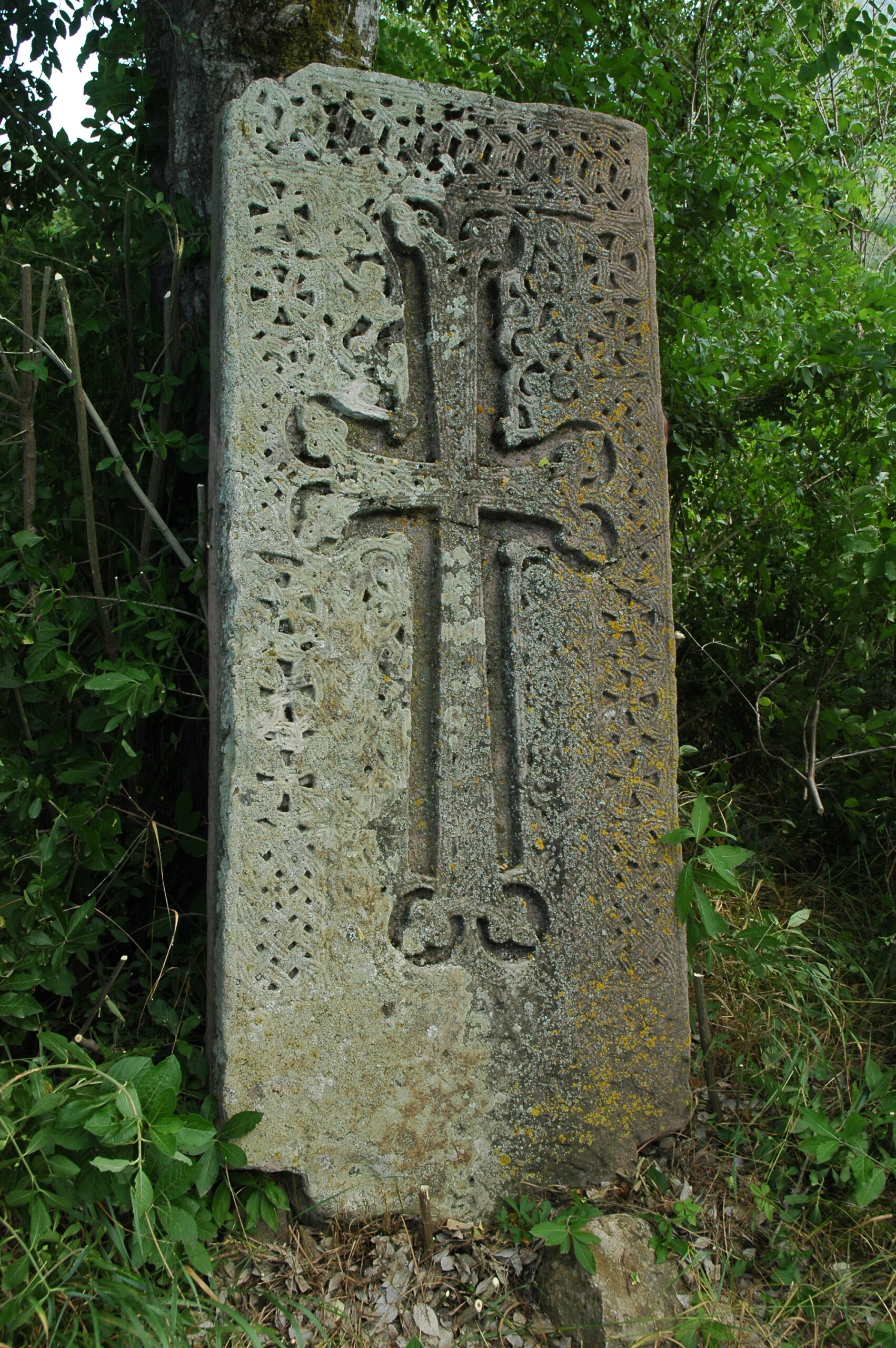The Surb Amenaprkich monastery of Poghosagomer
Location
The monastery is situated in the Martakert region of the Republic of Artsakh, near Poghasagomer village. The church is constructed on the edge of a promontory, overlooking a stream that flows through a local brushwood gorge (Barkhutareants 1895, 191).
Historical overview
Historical information about the church is lacking. However, on its western facade, above the entrance porch, there is a construction inscription (Fig. 1). "During the pontificate of Lord Hakobos and the rule of Vakhtang, son of Hasan, we, Hovhannes, Serob, Sargis, and Grigor, sons of Harbatsayr, built this church, the Mother of God, in our homeland in memory of our souls. We ask that you remember us and our parents in your prayers."
Although the inscription does not specify a date, the church must have been constructed in the early 13th century. This conclusion is drawn from the mention of the church being built during the reign of Vakhtang, son of Hasan and Prince of Nerkin Khachen, who passed away in 1214 (CAE 5, 91).
Architectural-compositional examination
The church is a cross-shaped structure with a central dome, both externally and internally (Figs. 2, 3). Among the arms of the cross, only the apse (high altar) is semicircular, while the other arms are rectangular (Figs. 4, 5). The construction utilizes small to medium-sized rough and hewn limestone stones. The cornerstones and window frames of the church are polished. The spire of the church dome has not been preserved (Fig. 6).
The dome is made of small rough stones. The round drum has four windows, with the eastern window being the best preserved, made from a single stone. The upper parts of the church are also lined with small rocks, although they seem to be loosely placed in some areas. In certain sections, the stones are arranged in a herringbone pattern (Fig. 7). The church walls are covered with plaster (Figs. 8, 9).
On the western facade of the church, there is an encased khachkar (cross-stone) (Karapetyan 1983, 205; Mkrtchyan 1985, 59-60). Near the church lies the old cemetery, as well as the village's new cemetery (Fig. 10). The old cemetery contains khachkars and fragments dating from the 12th-13th centuries. Among them, one notable khachkar (Figs. 11, 12) stands out, bearing the following inscription on the back:
"I, Mkhitar, erected this cross for my brother Hasan during the rule of Jalal and the pontificate of Lord Vardan. Whoever reads this, please remember us in your prayers." Jalal, also known as Hasan Jalal Dola, ruled from 1214 to 1261, and the khachkar dates back to that period. It is noteworthy that in the two inscriptions that have come down to us from Poghosagomer, the father and son, Vakhtang and Jalal, are remembered as the rulers of the area. This suggests that the Poghosagomer monastery and church held special significance for the princely family. Interestingly, one of the figures depicted on the dome of the Hovhannes Mkrtich Church in Gandzasar believed to be a patron of the arts, is thought to be Vakhtang, holding a miniature of the Poghosagomer church (see: https://monumentwatch.org/en/monument/the-dome-and-sculptural-compositions-of-the-surb-hovhannes-mkrtich-church-of-gandzasar/).
The condition before and after the war
During the Artsakh wars, the church remained undamaged, although it was in a state of disrepair and in need of restoration. After the September 2023 conflict and the forced displacement of Artsakh Armenians, the church came under the control of Azerbaijan.
Bibliography
- Barkhutareants 1895 - Barkhutareants M., Artsakh, Baku.
- CAE 5 - Corpus of Armenian Epigraphy, issue 5, Artsakh/ made by S. Barkhudaryan, Yerevan, 1982.
- Karapetyan 1983 - S. Karapetyan, Two Cross-domed Churches in Artsakh Province, Patma-Banasirakan Handes (Historical-Philological Journal), N 2-3.
- Mkrtchyan 1985 - Mkrtchyan Sh., Historical and Architectural Monuments of Nagorno-Karabakh, Yerevan.
The Surb Amenaprkich monastery of Poghosagomer
Artsakh
